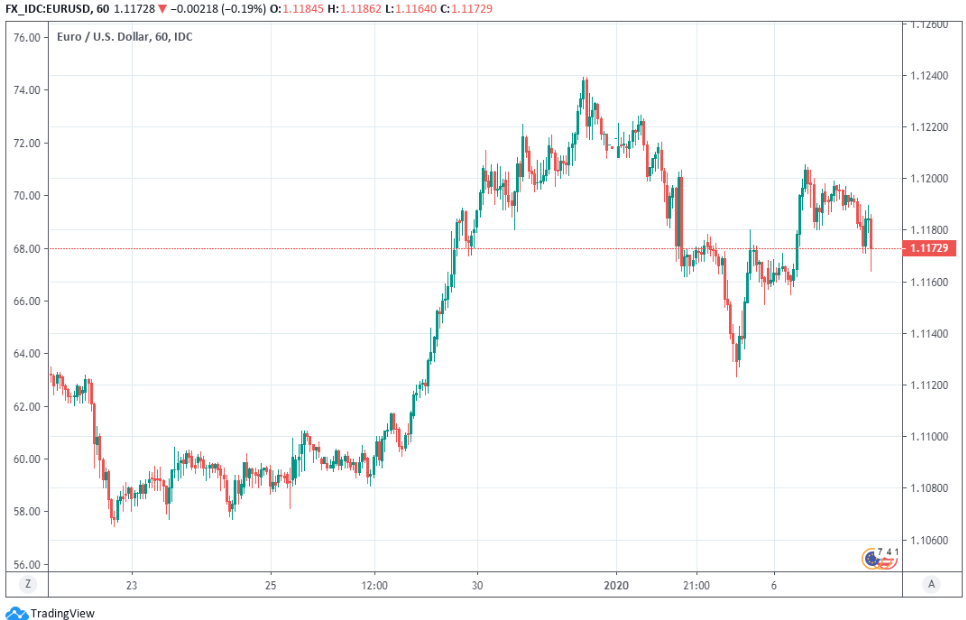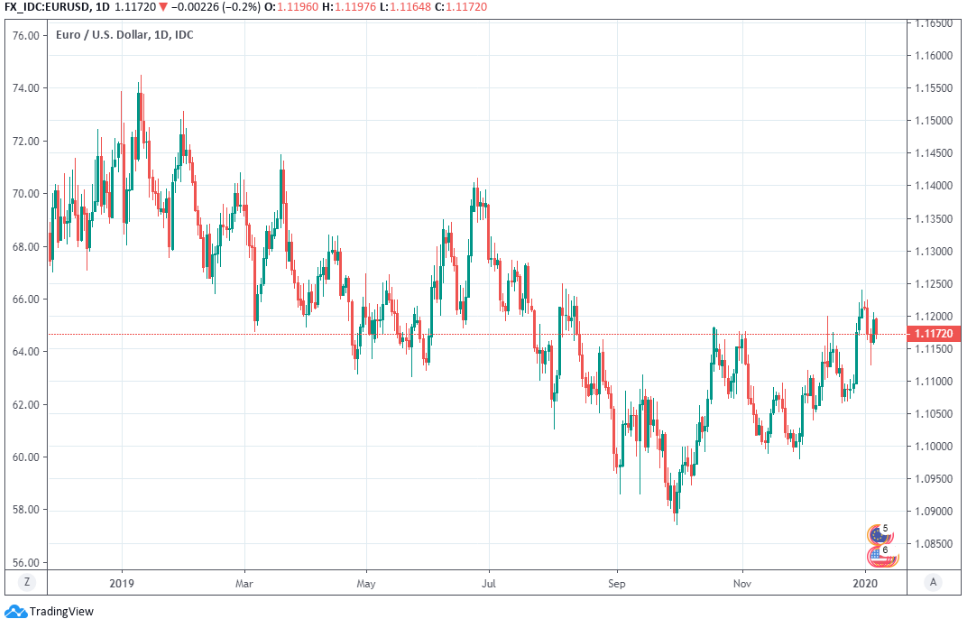Euro-Dollar Rate Outlook Aided by Inflation and Retail Sales Gains
- Written by: James Skinner

Image © European Central Bank, reproduced under CC licensing
- EUR inflation rises to nine-month high in December.
- On oil price rebound as core inflation also stabilises.
- Retail sales surge in November, October revised up.
- Signs of economic stabilisation stacking up in Europe.
- As U.S. outlook clouds and presidential election looms.
The Euro outlook improved Tuesday after Eurostat data showed inflation hitting a nine-month high in December and consumers opening their wallets in November, adding to other recent signs that the continental economy is stabilising in the wake of an 18-month retrenchment.
Eurozone inflation rose from 1% to 1.3% in December, its highest level since April 2019, due to gains in commodity prices while core inflation remained unchanged at a post-crisis high of 1.3% last month. Core inflation removes commodity-linked food and energy items from the goods basket so is seen by central bankers and markets alike as the more reliable gauge of domestically generated inflation trends.
Separately retail sales were reported to have risen by 1% in November while the 0.6% contraction initially declared for October was revised to -0.3% in what was another win for the Euro and apparently stabilising continental economy. There had been concerns last year that the the downturn in the manufacturing sector would spread into services and the domestic side of the economy.
"On the one hand, 1.3% core is higher than it has been for a quite some time and momentum is building gradually. But, on the other hand, core inflation is likely to be lower already next month and activity indicators are probably more important until the risks of a deeper downturn have diminished," says Anders Svendsen, an economist at Nordea Markets. "In sum, today’s numbers are likely to keep the ECB in a wait-and-see mode."
The Euro steadied briefly against the Dollar in the wake of the report before resuming an earlier decline and likewise with the Pound-to-Euro rate. The Euro-Dollar rate was quoted 0.25% lower at 1.1167 shortly after the release while Sterling was 0.14% higher at 1.1780 against the single currency.

Above: Euro-to-Dollar rate shown at hourly intervals.
Markets care about inflation statistics because central banks are obliged to use interest rate policy to keep price growth contained within preset parameters. The target in Europe is to ensure the consumer price index averages "close to, but below 2%" over the medium-term, although inflation is sensitive to growth so the pulse of the economy is also important to the outlook.
"November’s retail sales numbers may also give rise to some excitement, coming in higher-than-expected at 1% month-on-month growth. It's important to remember, however, that the rise of Black Friday across the eurozone will play an important role here," says Bert Colijn, an economist at ING. "Without material improvement in business confidence and the growth outlook, continued modest price growth seems the most likely scenario for the moment."
Tuesday's price gains may evoke the image of a monetary bloc where inflation pressures are building at a pace where they could soon become relevant for central bank interest rate policy but the reality is the European Central Bank (ECB) has widely telegraphed that continental borrowing costs are likely to remain at their current record lows for quite some time after the consumer price index has converged "sustainably" with its target.
In other words, inflation gains may not be enough to generate a sustainable recovery by the Euro off its recent lows. In December the ECB bought its first €20 bn installment of bonds as part of the quantitative easing (QE) program announced in September, which will continue alongside the negative interest rate policy until the inflation target has been met and "such convergence has been consistently reflected in underlying inflation dynamics."
"We forecast EURUSD at 1.15 by the end of this year. To the extent that the Trump policies pushed the USD above equilibrium in the least two years, the fading of these policies should gradually bring the USD back to equilibrium," says Athanasios Vamvakidis, head of FX strategy at BofA Global Research. "EUR/USD broke a handful of resistance levels ending 2019. A weekly close [above] the 50wk SMA at 1.1180 and/or 1.12 should lead to the 38.2% retracement of 1.1519. A DXY death cross with negatively sloped 200d SMA occurred ending 2019. This carries a bearish bias (bullish euro)."

Above: Euro-to-Dollar rate shown at daily intervals.
"Slowing US growth combined with a modest recovery in Europe will lead to a steady grind higher for EUR/USD in the year ahead (click here). 10-year UST yields have already dropped sharply in the New Year and if today’s ISM survey disappoints it will add to downward pressure on US yields and the US dollar," says Fritz Louw, a currency analyst at MUFG.
Louw says a sustainable recovery of the Euro is more likely to come from signs of stabilisation in the Eurozone economy combined with an accelerated softening of growth in the U.S. That would give the market a whiff of a future in which the economic divergence that lifted the Dollar in 2018 reverses in favour of the European single currency, which might benefit from any increase in market expectations for Federal Reserve rate cuts if investors can see an economic recovery putting a floor under the ECB's rates.
He says Euro price action has supported this idea early in the New Year, with the single currency having risen over the last week partly in response to stabilisation in the bloc's manufacturing PMI surveys and upward revisions for the services sector. Those data were released at the same time as equivalent numbers were declining in the U.S. However, the near-two year upturn in the Dollar will also be threatened by political uncertainty this year ahead of the November presidential election.
"Americans will also determine the outcomes of all 435 seats in the House of Representatives, 35 of 100 seats in the Senate, 13 state and territorial governorships, and myriad local elections—with major short and long term ramifications. Buckle your safety belts and prepare for a bumpy ride," Louw says. "The outcome of the election will be extremely important and will immediately shape expectations on growth with implications for FX and rates."
MUFG forecasts the Euro-to-Dollar rate will end the year at 1.15 after having risen at a rate of one cent per quarter.
Time to move your money? The Global Reach Best Exchange Rate Guarantee offers you competitive rates and maximises your currency transfer. Global Reach can offer great rates, tailored transfers, and market insight to help you choose the best times for you to trade. Speaking to a currency specialist helps you to capitalise on positive market shifts and make the most of your money. Find out more here.
* Advertisement





